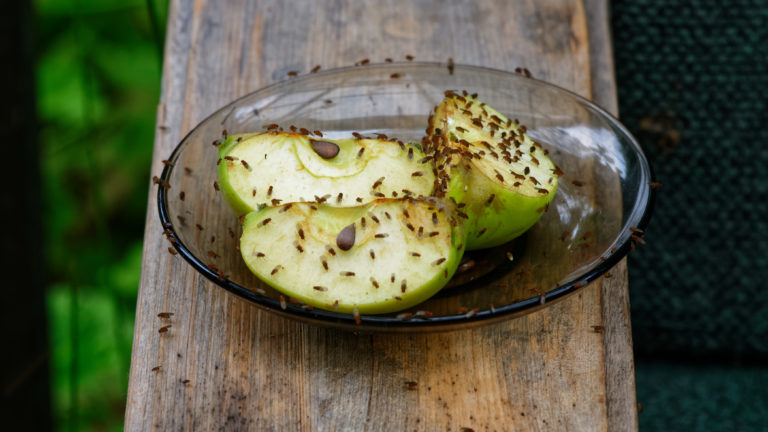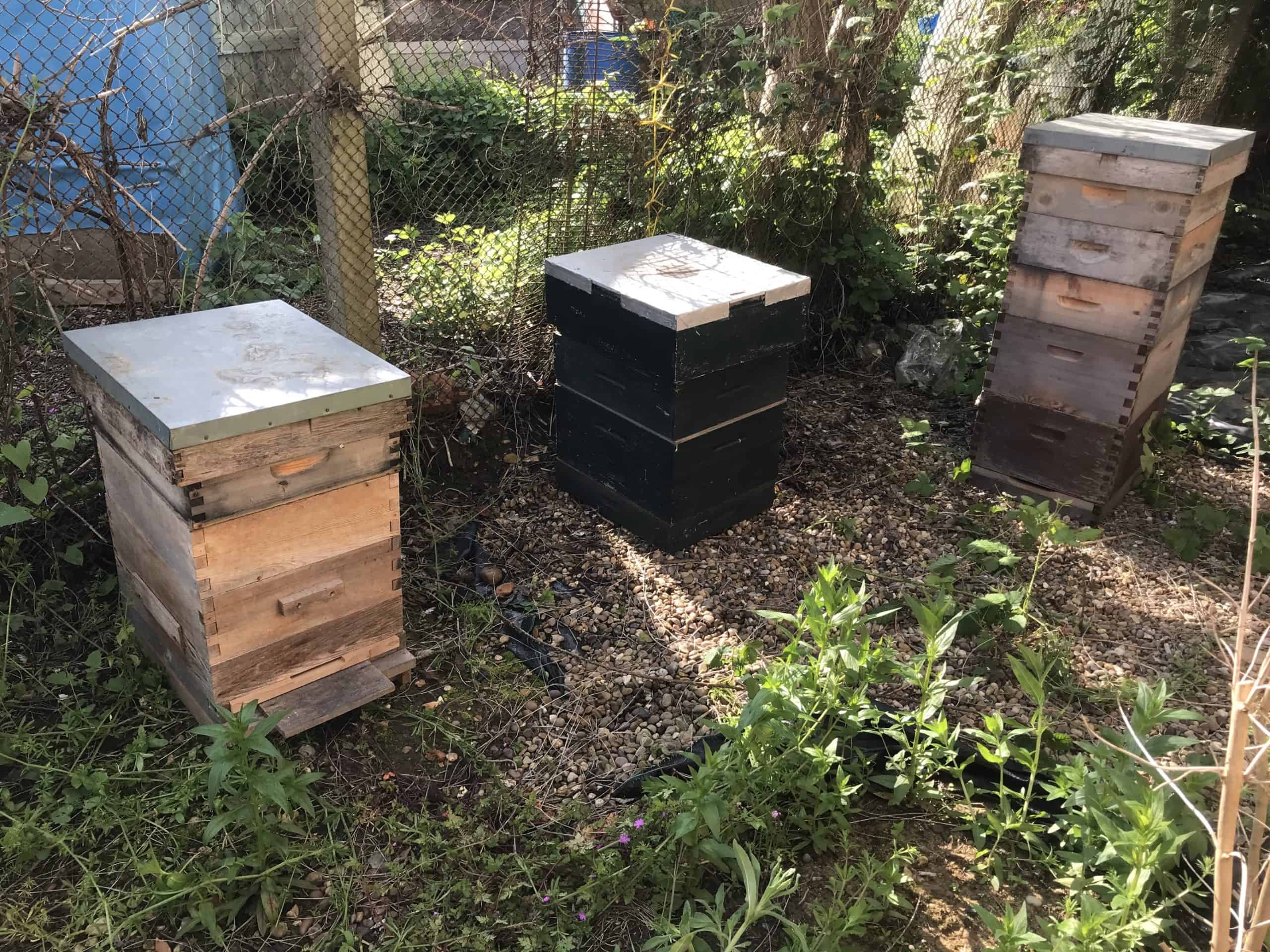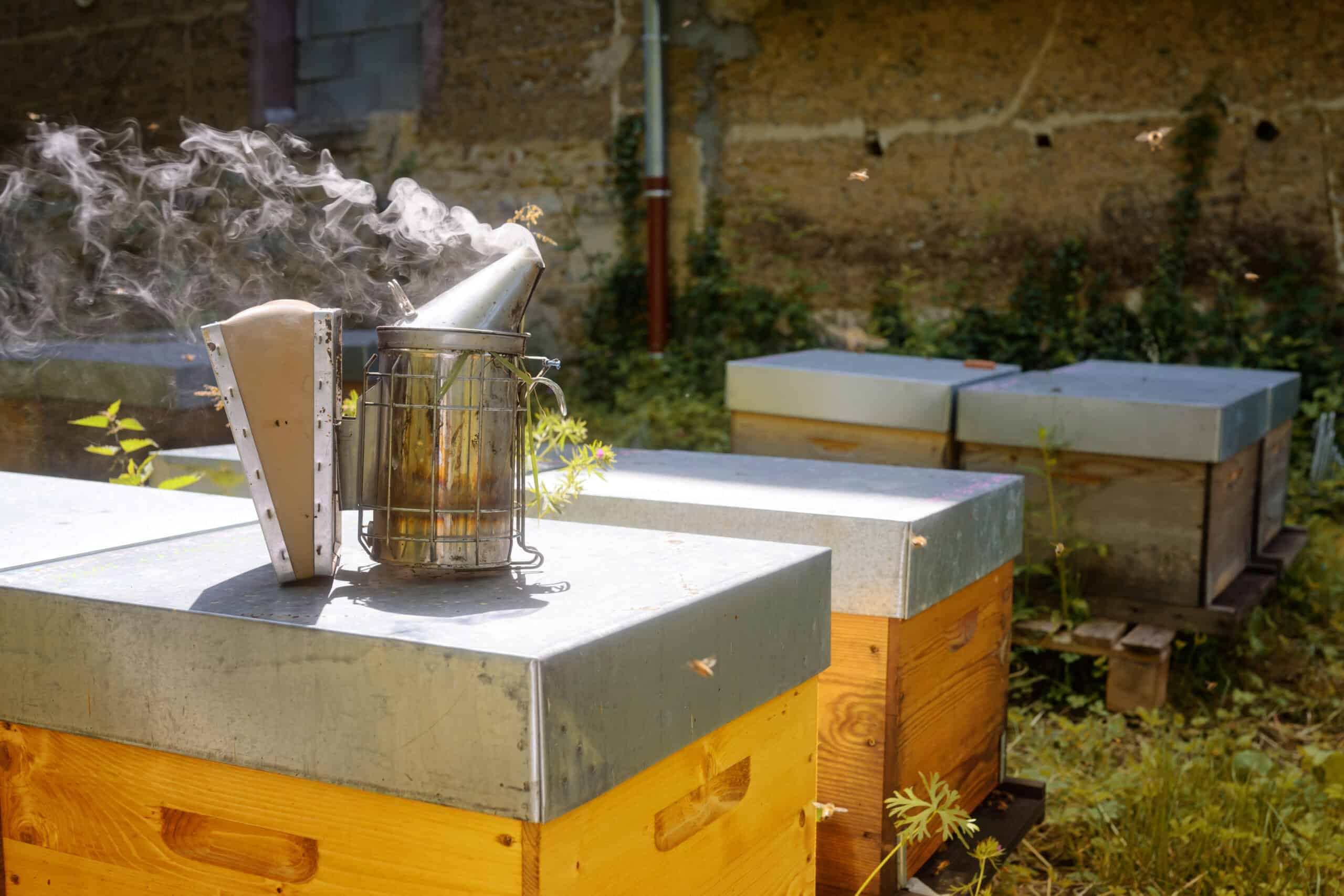In case you hadn’t noticed we are in the middle of a heatwave!
This can mean only one thing…flies, and lots of them!
One of the more annoying pests to deal with, flies can impact your home and be surprisingly tricky to get rid of. There are many species of fly present in the UK and they are all fairly common. During the warm summer months these flies become increasingly active and more of a problem to households up and down the country, but the current intensity of the heat can escalate these problems even more.
Do you know the different types of flies you may come into contact with and how best to deal with them?
If you are unsure this handy guide from DALPEST Pest Solutions will tell you everything you need to know.
Preventing flies from getting inside.
Many pest related problems can be avoided with good prevention techniques. There are a few things that you can do to try and stop problems occurring.
- Keep rubbish bins and bags closed and emptied regular
- Apply window or door fly screens
- Keep food covered up
- Keep curtains closed where possible when windows are open
- Use internal fly traps
- Use electric fly killers
- Invest in fly sprays
None of these methods are guaranteed to prevent all flies, but they can help prevent bigger problems from starting.
What are the different types of fly?
Here is the buzz on the most common types of fly to enter your home.
1. Drain Flies: These are a very common problem in this country, these tiny flies look very similar to moths up close, this is due to their small fuzzy bodies. A drain fly is similar in size to a fruit fly around 1.5mm – 5mm long.
The reason they are a tricky pest is because in a 48 hour period they can lay and hatch up to 300 eggs. It may not be immediately obvious that you have drain flies present, however as the number increases you will spot more of them around the house. You are most likely to find them in kitchens and bathrooms, and any areas where the drains may have been sitting for any length of time.
Drain flies are true to their name and are most attracted to shallow or stagnant water sources, therefore these flies can go hand in hand with a drainage issue. Neglect or lack of maintenance of pipes will make the perfect breeding ground for drain flies.
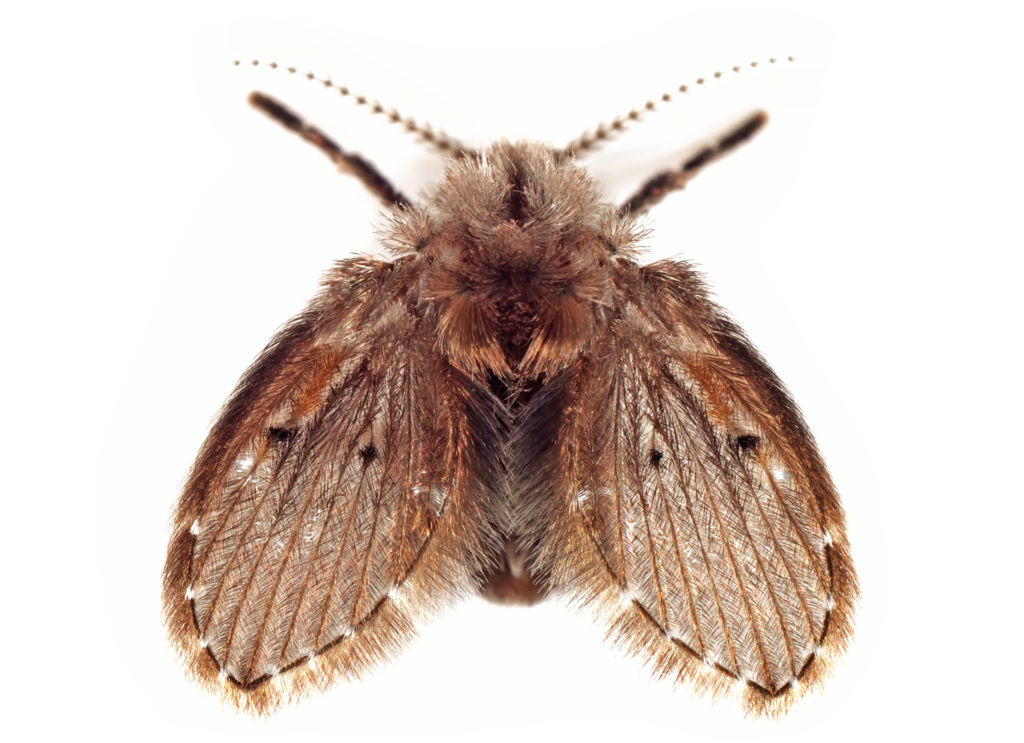
How to get rid of them: You can attempt to get rid of drain flies yourself by simply running the water in your bathrooms on a regular basis, this removes any sitting water from the pipes. You can also try boiling some water and flushing this down 2 to 3 times a week where drain flies are present.
If the problem persists, you should look to contact a professional pest control company who can help to eliminate them with non-toxic chemicals for you.
If you believe the problem is with your drains then please visit our sister company DALROD’s website for advice DALROD – 24/7 Drainage Solutions From Local Expert Technicians
2. Fruit Flies: We have all had an experience with these small flies. They are light brown in colour with red eyes. Fruit flies feed on (you guessed it) fruit! They are attracted to the sugary smells that come from rotting and fermented fruit and alcohol in our homes, kitchens and bins.
No matter how many you seem to get rid of, there are always more back in their place, and this is because female fruit flies can lay 500 eggs at a time!
They are extremely frustrating and make your home look unsightly as they dart around. While they are also not a threat to health everyone would like tips for keeping them away!!
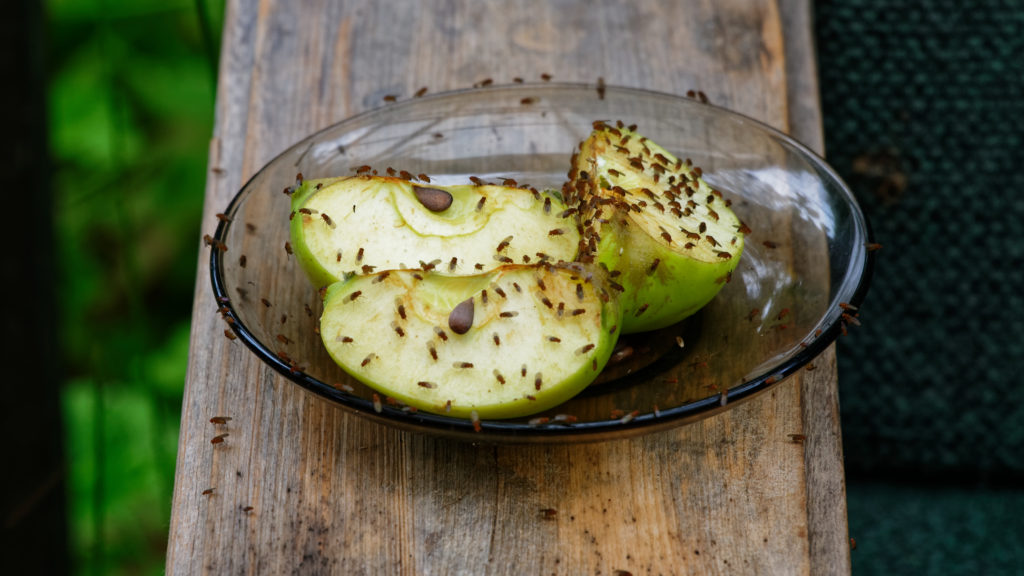
How to get rid of them: The best remedy for fruit flies is to create a solution of cider vinegar mixed with a teaspoon of sugar, place this in a small container and cover with cling film tightly. Simply make a few small holes in the cling film and the flies will be fighting to get in. Once in they will be unable to get out and will ultimately drown.
3. Bluebottles: We are currently in the middle of bluebottle season. If you ask anyone, these are probably the most detested fly of all. They are horrible and they are large, sized between 6mm – 12mm with shiny metallic bodies.
Bluebottles are easily identified because of their colouring and loud low tone buzzing noises.
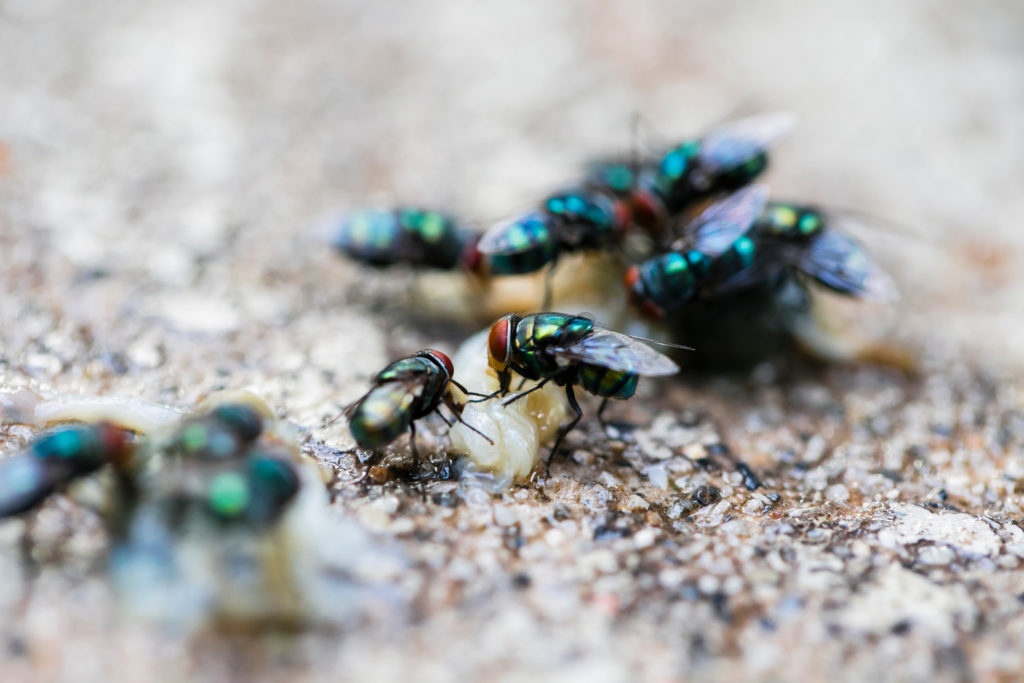
How to get rid of them: Bluebottles are most easily eliminated through regular cleaning of rooms and surfaces within the home. This may sound simple but regular cleans will prevent sticky substances being left on worktops, and it will ensure bacteria is removed. Also, ensure that rubbish is removed regularly as the smells will also attract the flies.
4. Common House Flies: These flies are a nuisance in the summer months and can easily get into your property while windows and doors are left open in the warmer weather. House flies are a dark grey colour and are most well-known for the buzzing noise they make as their wings beat together. They are larger than fruit or drain flies at between 4mm – 7.5mm.
All flies pose a risk of spreading diseases including Salmonella and E-coli, but house flies are particularly associated with this as they are often present around rubbish bags and external waste before coming inside your home. They can then go on to quickly contaminate surfaces that they touch.
Infestations can be quite easily identified due to the number of flies that will be hanging around, they will be the most active during the day and may settle down at night.
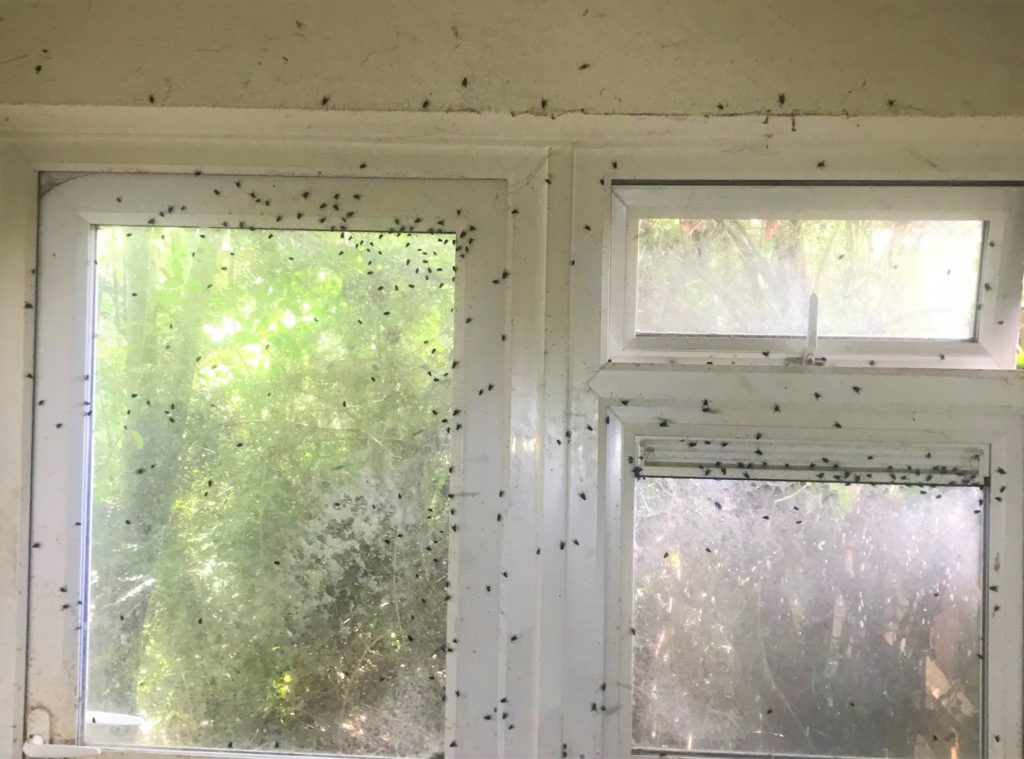
How to get rid of them: In a similar fashion to dealing with Bluebottles, house flies can be deterred eliminated through regular cleaning of the home. This includes removal of exposed food products, or any food that may be beginning to rot, as this will be highly attractive to these flies.
5. Cluster Flies: These can often be the most concerning looking of all the flies, because, as their name suggests, they cluster together in large groups. These are again harmless to humans but there will be a lot of them in one go. They look similar to house flies so they can be mixed up easily.
Cluster flies are most active heading in to the Autumn months within more rural areas. They have two key behaviours, firstly they will gather on sun lit windows and areas outside of houses to absorb warmth during the day. Then as the light fades they will crawl inside, the majority of cluster flies are found within loft spaces for this reason.
How to get rid of them: Getting rid of cluster flies is usually something that you will need a trained pest controller to do for you. Some sprays can be purchased and applied to the flies themselves, however it is unlikely to reach all of the flies currently already in the property, therefore the advice is to contact a professional.
If problems with flies persist and DIY methods have no overall effect then it is important to seek professional advice from a reputable pest control company such as DALPEST Pest Solutions.
Pest control firms are experienced at dealing with infestations and can locate the source of the problem, which means we are better equipped to deal with them and find the best solution.

DALPEST Pest Solutions are local to the Peterborough and Milton Keynes area, so if you are experiencing ongoing issues with flies then please speak to us on the number below.

